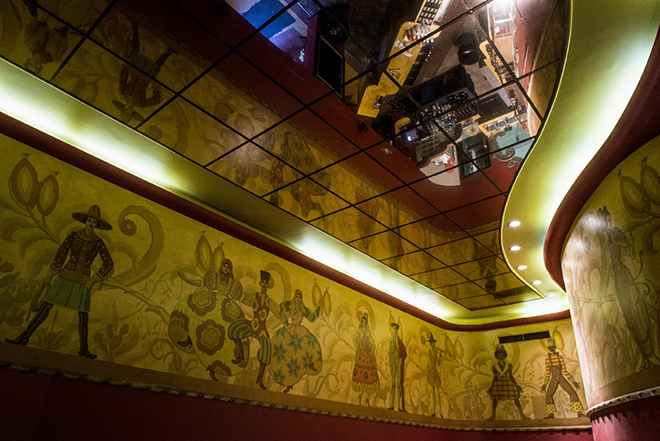
Alamo Drafthouse loves the Lakewood Theater and also the surrounding neighborhood, says Bill DiGaetano, the Austin-based movie house company’s DFW COO.
“They are Alamo customers through and through,” DiGaetano says of Lakewood residents, and “it’s a phenomenal site for a theater.”
Alamo is not unfamiliar with historic theaters. The company restored and operates the Ritz in downtown Austin and currently is renovating the New Mission in San Francisco. “We’re a very scalable concept,” DiGaetano says. Though the company’s newer theaters, like the Alamo Drafthouse in Richardson, typically have 10 or 12 screens, the Ritz and the New Mission are 2- and 5-screen theaters, respectively, because the company worked with their original sizes.
“We are a company of film nerds and film lovers, whether it’s preserving 35 mm print or old movies houses, it’s something we’re very passionate about,” he says.
DiGaetano adds that Alamo hopes to similarly preserve the Lakewood Theater, retaining the monument, murals (pictured above) and other historical details.
“We would have to break it up into smaller auditoriums — that’s the only way to make something like that truly buy-able from a business standpoint — but other than that, we would keep it as true to its original form as possible,” DiGaetano says.
However, as we reported yesterday from theater owner Craig Kinney of Williingham-Rutledge, parking in the 1930s shopping center is a problem for Alamo. The Lakewood Theater opened in 1938 and has run almost continuously since then, until January when the tenant lost its lease. Willingham-Rutledge repeatedly has conveyed that a theater would be its first choice for a new tenant but has expressed doubt that it’s economically feasible, saying that breaking up the space into retail and restaurants is more likely.
DiGaetano says the 300 parking spaces Kinney mentioned are what Alamo would need for a 6- or 8-screen theater, but for the Lakewood Theater, 150 spaces would be optimal. He thinks there may have been a miscommunication in negotiations about the specific number, but confirms that parking is “by far the biggest issue for us, just because if you don’t have parking, the theater is not going to be used the way it needs to.”
“Anybody in the neighborhood knows that, even now with the theater shut down, parking over there is not good at all,” DiGaetano says. “It’s an issue whether Alamo comes in or whether two or three restaurants come in.”
The two-level parking garage behind the theater that Willingham-Rutledge wanted to build “could have gotten us very close to that number,” DiGaetano says, and he also would like to use area garages for overflow.
As for Alamo’s leasing offer being lower than what the owners want, DiGaetano points out that “we’re not asking for a dime in tenant improvements. We’re willing to take the theater as-is and do improvements on our own.” That can be “a little scary” with historic renovations because “there’s a lot of x factor involved once you start going in there, and what we like to do is truly preserve it.”
DiGaetano seems hopeful about the negotiations and says Alamo is “ready to keep talking. From our perspective, the ball’s kind-of in [the owners’] court.”
If the deal doesn’t pan out, he says, there’s always the possibility that Alamo could come back to the Lakewood Theater in future years.
“I don’t think it’s going anywhere,” DiGaetano says. “At least, I hope it’s not.”





